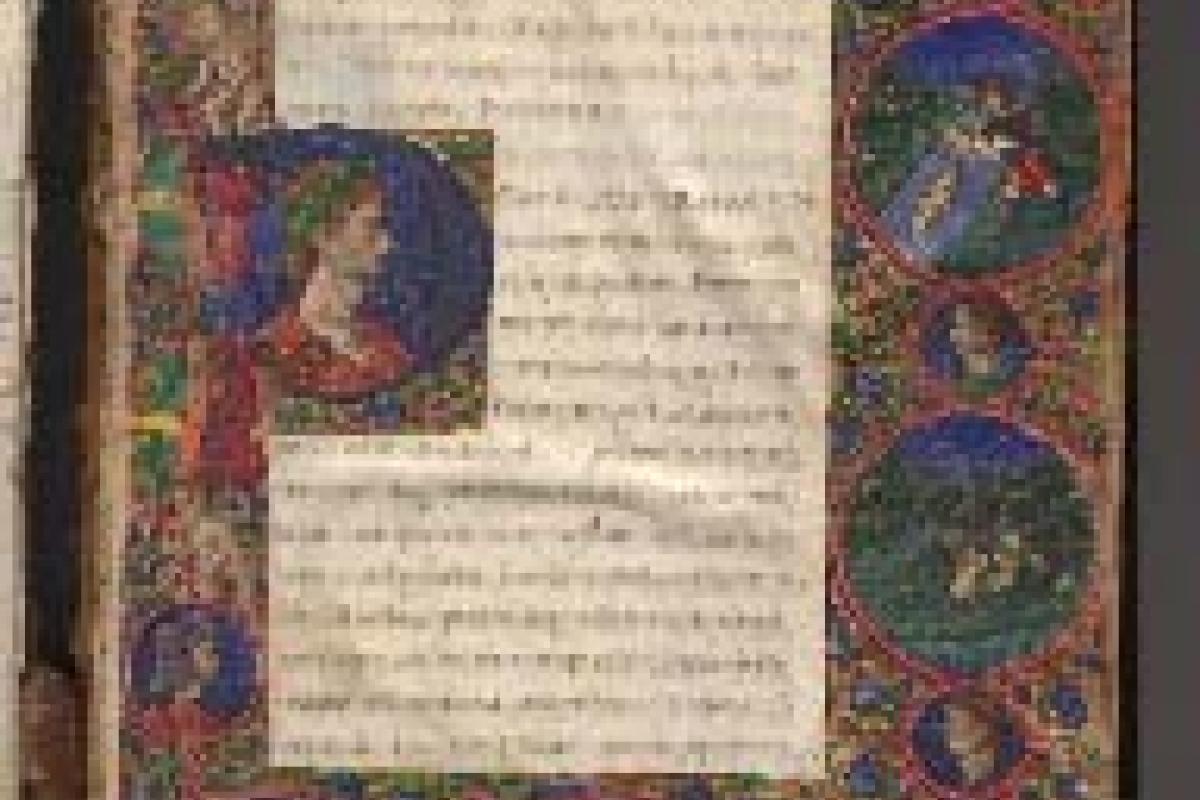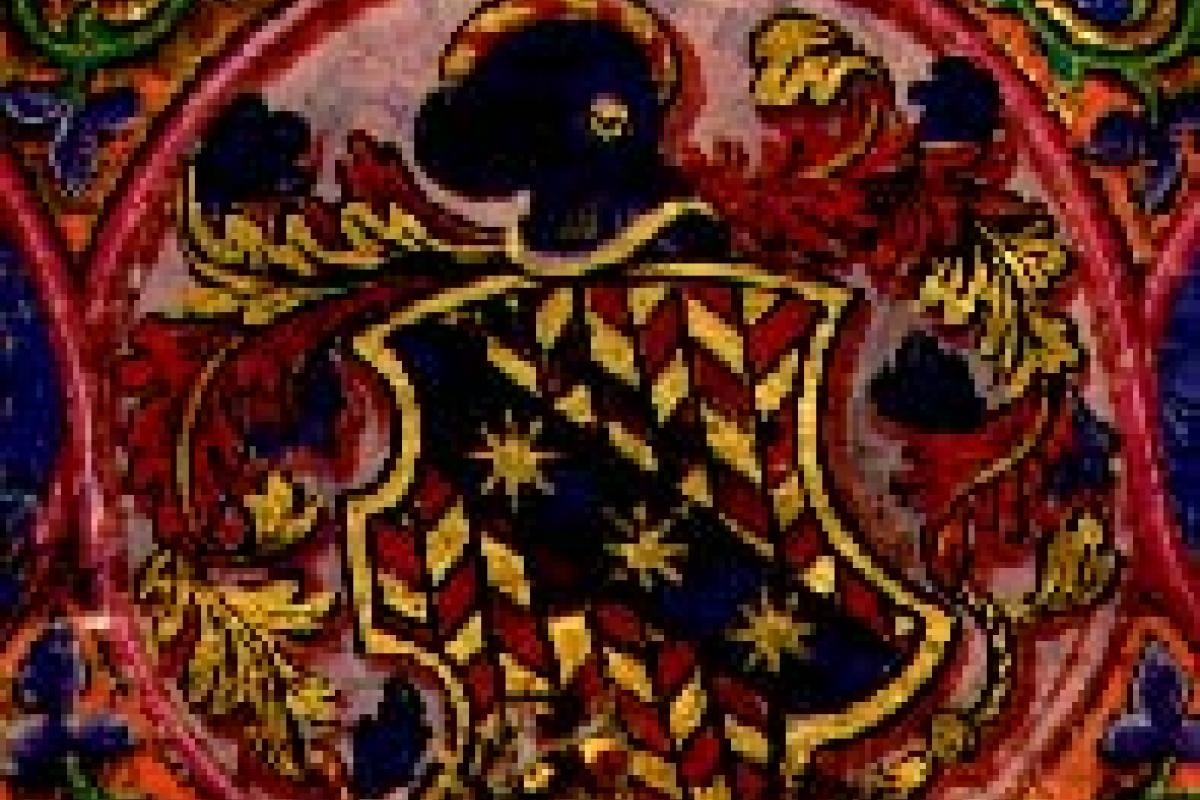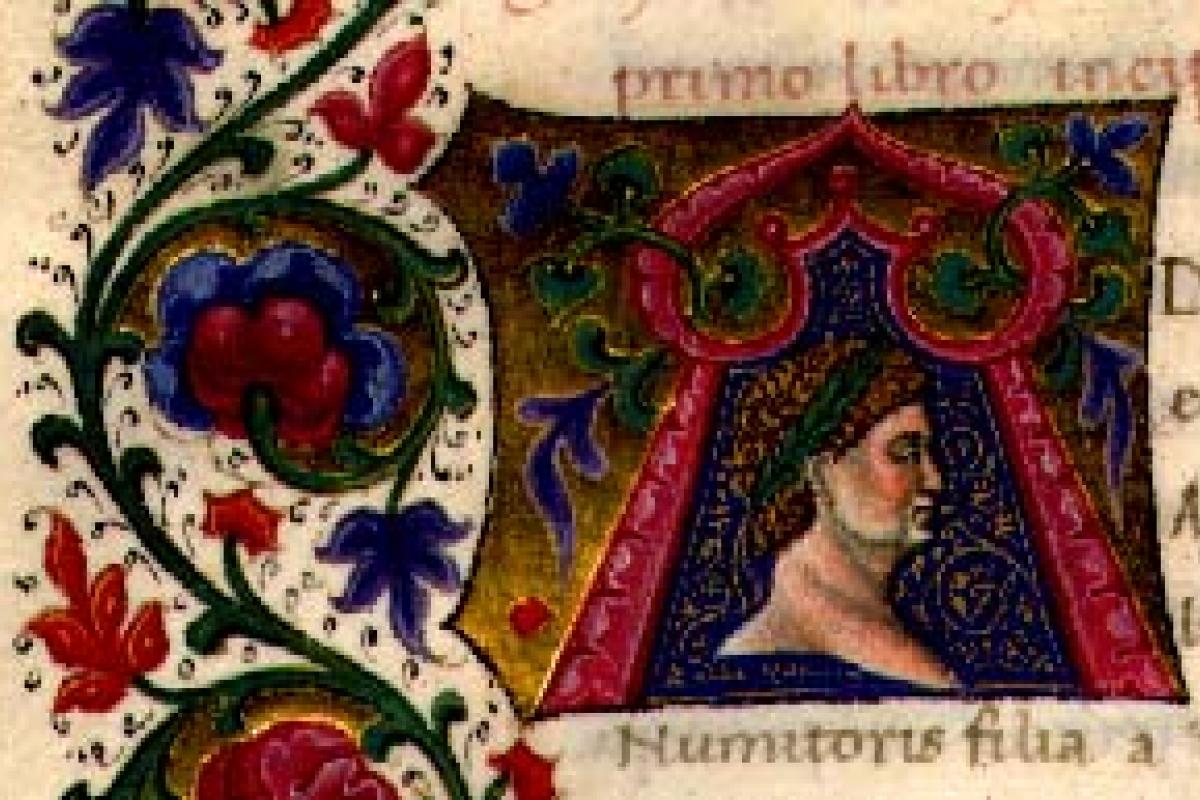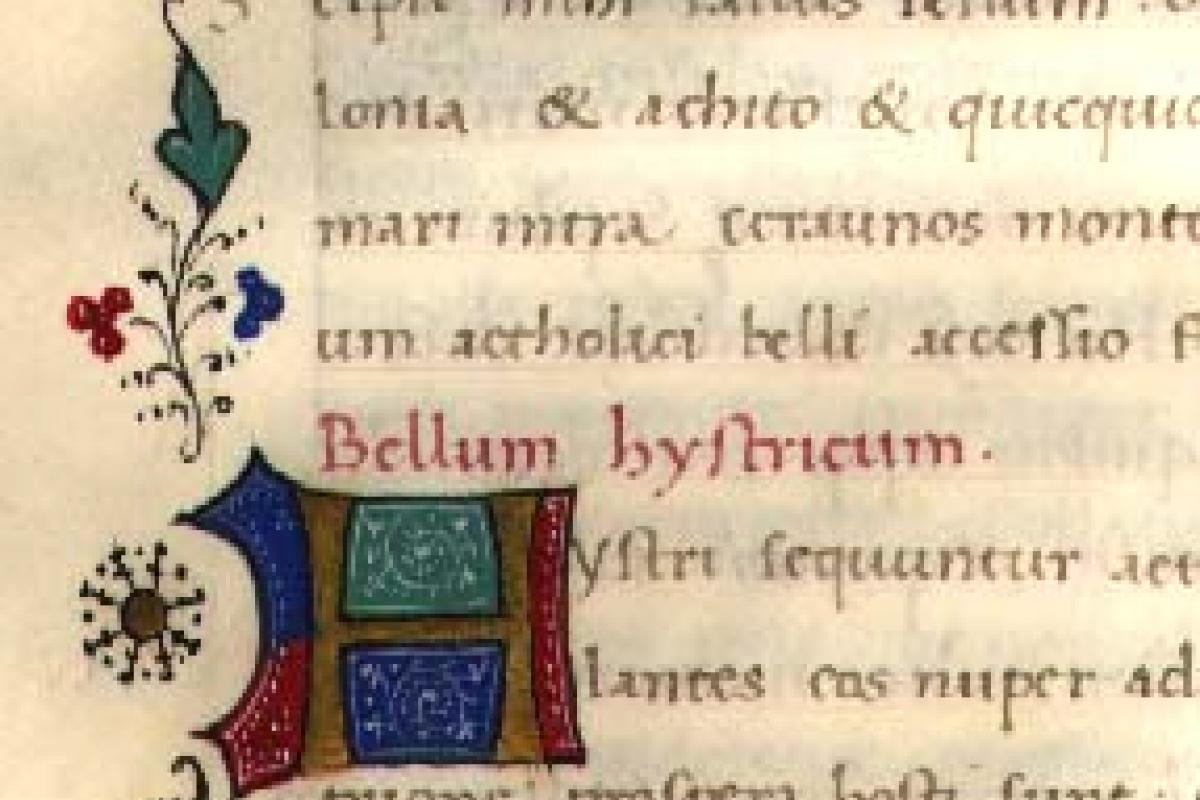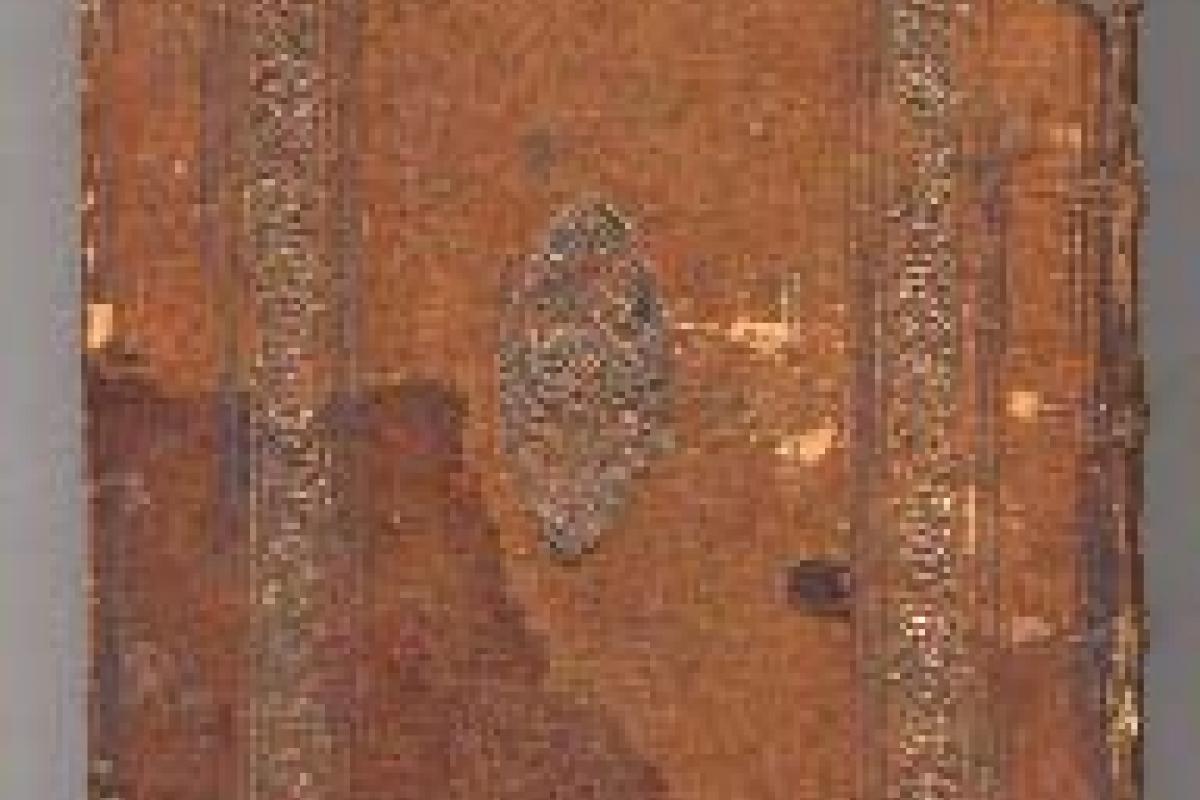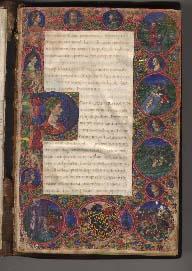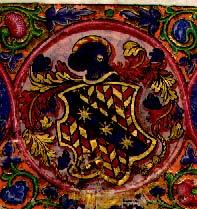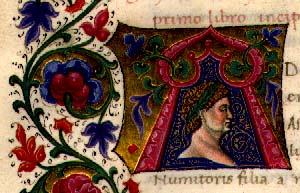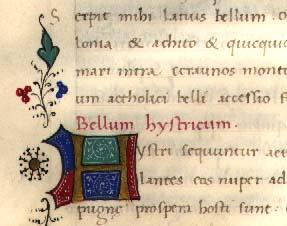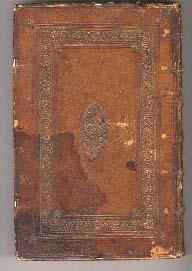Lucius Annaeus Florus, Epitome of Roman History and Sextus Ruffus, Contents of Livy's History of Rome
Lucius Annaeus Florus, Epitome of Roman History and Sextus Ruffus, Contents of Livy's History of Rome
Italian, ca. 1450
Images include fol. 1r: Text page with author portrait and scenes from Roman history, plus details; fol. 32v: Script example; fol. 89v: Historiated inital; and cover.
Language: Latin
vellum
height 25 cm
width 16.5 cm
Lucius Annaeus Florus, Epitome of Roman History (1-89r) and Sextus Ruffus, Contents of Livy's History of Rome (89v-163r). 2 pages with illuminated borders and historiated initials, 3 large initials, 212 smaller initials. The manuscript contains 164 leaves of fine vellum and one front flyleaf, also of fine vellum. The edges of most of the leaves are soiled from use and the corners (especially the upper ones) toward the front and the back are stained.
University of Oregon Special Collections and University Archives
Edward Burgess Manuscript Collection, Ms. 1
Diebold, William. The Illustrated Book in the Age of Printing: Books and Manuscripts from Oregon Collections. Portland, OR: Douglas F. Cooley Memorial Art Gallery, 1993, cat. no. 5, pp. 18-19 - Quoted with permission
Although worn, this page [reference applies to exhibition from which this text was originally a catalog entry] shows a layout typical of luxury manuscripts of the Middle Ages. The text is introduced by a large initial "P" decorated with a portrait of Lucius Annaeus Florus, the second-century A.D. Roman historian. Surrounding the text block are full borders. The roundels show scenes from the early history of Rome: in the side margin are Romulus receiving instruction from Faustulus, Romulus and Remus thrown into the Tiber, and the twins suckled by the wolf, while the bottom border shows Romulus setting off for battle and his subsequent victorious return. In between the roundels are small portraits of Roman kings and generals. At the top, rather remarkably, is a medallion of Christ, distinguished by his gold cross nimbus. Although Christ played no role in Florus's account of Roman history (indeed, he was born well after the events depicted on this page), his image is meant to show his guiding role in all human affairs according to the Christian conception of history. This medallion makes clear what is often forgotten: the Italian Humanist interest in classical antiquity was not secular (as is our own), but Christian.

